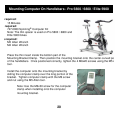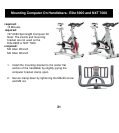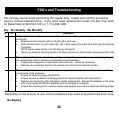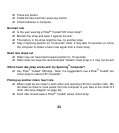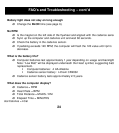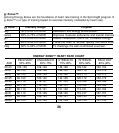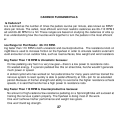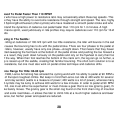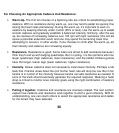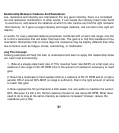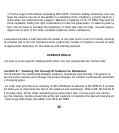28
It Good
To Pedal Faster Than 110 RPM?
Those who have a high power to resistance ratio may occasionally attain these leg speeds. This
means they have the ability to overcome resistance through strength and speed. The rare, highly
skilled Spinning® enthusiast (often
cyclists) who have mastered a smooth pedal stroke and who
understand the dynamics of cadence can pedal faster than 110 rpm for 1
-3 minutes. A high
performance sprint, used judiciously in ride profiles may require cadences over 110 rpm for 10
-
20
seconds.
Bouncing
In The Saddle:
When rid
ing at cadences of 100-120 rpm with too little resistance, the rider
will bounce in the saddle.
What causes the bouncing has to do with the pedal stroke. There are four phases to the pedal stroke.
Many riders, however, usual
ly have only one phase—
straight down. That means that they haven’t
perfected sweeping the foot back at the bottom of the pedal stroke and pushing the toe forward at the
top. As a result, they push down furiously on the pedals and rely on the flywheel to ca
rry their foot the
rest of the way. When their foot reaches the bottom of the crank arm, the leg can go no further, and
the hip is raised up off the saddle, creating that familiar bouncing. The short
-
term solution is to add
more resistance, but
one must also work on pedal stroke technique and cadence drills.
Cadence Range
For Hills: 60-80 rpm
Since 1998, Lance Armstrong has amazed the cycling world with his ability to pedal at 90
RPM
up
some of Europe’s toughest climbs. But keep in mind that Lance can rid
e at 400 watts for several
hours and stay aerobic (watts is a measure of power; 400 watts is a lot of power), whereas many
skilled cyclists may be lucky to achieve 400 watts for a few minutes. In order to pedal at 90
RPM
steep hill,
one must either be
superhuman or must choose a gear that is so low (granny gear), that
bike barely moves. The granny gear is the small cog found on the front chain ring of mountain
bikes and some road bikes
—it allows the rider to climb hills at a much higher cadence and
lower
resistance, but
his/her power and speed are reduced.



